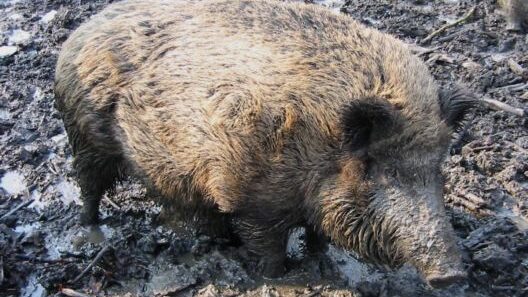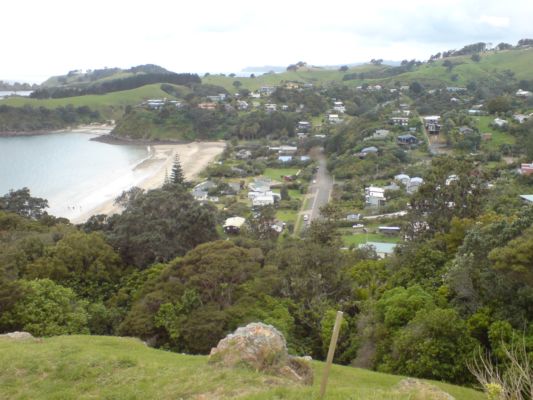Last year, when the NZ Government announced its Predator-Free 2050 goal, it also included some interim goals to be achieved by 2025 – now just eight years away. One of those goals is that: ‘by 2025 we will have eradicated all mammalian predators from New Zealand’s island nature reserves’.

It sounds ambitious for an 8-year time-frame. The interim goal specifies ‘all’ mammalian predators – presumably including cats, mice, pigs and hedgehogs – as well as the key PF2050 predators, possums, rats, ferrets, stoats and weasels.
But what exactly meets the definition of an ‘island nature reserve’? How many such islands are there and what would an eradication of all mammalian predators entail? These are some of the questions pondered in an article just published in the New Zealand Journal of Ecology.
Article authors John Parkes, Andrea Byrom and Kerri-Anne Edge first looked at how many islands there are in New Zealand and what exactly might be meant by ‘nature reserve’.
“We identify the New Zealand islands over one hectare managed as reserves by the Department of Conservation (DOC) that have mammalian predators that can be eradicated. There are over 850 islands, islets, stacks and vegetated rocks in the New Zealand archipelago. We exclude islands in lakes and rivers and those smaller than one hectare, which leaves 616 islands, less than half of which are under some form of reserve status (286 islands entirely managed by DOC and 13 under mixed tenures but with some reserve land).”
So 850+ islands is reduced down to 299 with at least some reserve land – the next question is how many of these 299 islands currently have mammalian predators present.
“One or more mammalian predators are known to occur on 48 of these islands, with the Government’s 2050 target species on 42 islands and other predators (in the absence of the target species) on six islands.”
So only 48 of the 299 islands of significant size, with full or partial reserve land, currently have predators – the numbers are starting to look perfectly achievable. The next question is what exactly constitutes a ‘nature reserve’.
“The Government’s 2025 goal nominates one class of reserve, nature reserves. Of the 48 islands, just four islands are classed as nature reserves – two (Mauitaha and Araara Islands) with protected kiore in the Hen and Chickens group and two in the Auckland Islands group (Auckland with mice, cats and pigs; and Masked with mice and cats) – i.e. none with the key species of the wider 2050 goal.”
Four islands – none with the ‘big 5’ target mammalian predators present. Two with predators (other than protected kiore) already absent, leaving two island with mice, cats and pigs to be removed. At this point the 2025 interim goal is starting to look just a little too easy. What exactly is being achieved here? We can do more than this – surely!
The authors too seem to find the strict definition of ‘island nature reserve’ too restrictive to be truly ambitious and consider instead a broader definition of the Government’s 2025 interim goal.
“Eradicating the mice, cats and pigs from the main Auckland Island is not a trivial project but would result in major biodiversity benefits. However, by itself it would provide little support for a wider PFNZ2050 initiative. Widening the tenure criterion to include all islands with any reserved lands is required to provide ‘stretch’ goals.”
“We consider other reserve classes but place more or less strict risks of reinvasion, as indexed by known swimming ranges of the predators, to judge the feasibility of eradication. Relaxing the reserve class of the island, but not our selection of swimming ranges, results in 15 candidate islands where all mammalian predators present could be eradicated for the 2025 interim goal.”

Interestingly, seven of those 15 candidate islands are inhabited, including Great Barrier Island, Chatham Island, Waiheke Island and Stewart Island. What’s more, on several of those islands, pigs are a valued asset. Now that does make for more of a challenge!
“The 15 candidate islands include six managed entirely by DOC and seven of mixed tenures. The mixed tenure islands are inhabited and for two (Stewart and Great Barrier) any attempt to eradicate the target species would need to include the adjacent islands, which are usually within swimming distance of the main island.”
Stewart Island, includes 105 adjacent islands, Great Barrier has 32. Now 15 candidate islands begins to look more like 152.
Having identified locations, it’s time to consider methodology and costs. Rodents are present on most of the 15 candidate island. On those islands which are uninhabited, aerial application of brodifacoum is estimated by the authors to be approximately $300/hectare. On inhabited islands, such operations become more difficult and the cost to eradicate rodents would be substantially higher.
“However, costs on inhabited or farmed islands can be much higher as a consequence of having to work around people and livestock, e.g. $800 per ha for Great Mercury Island and $7000 per ha for Lord Howe Island. At $800 per ha, the costs to aerially bait the four large, inhabited islands would approach $250 million.”
That cost is just to eradicate rodents – and only if and when the islands’ inhabitants approved such an aerial eradication programme. There would be additional costs to eradicate the other mammalian predators present, with the costs specific to the situation on each island, depending on what target species were present. A total cost of $250 million for just four (admittedly inhabited) islands is certainly significant – particularly when you consider that the total seed funding allocated to the Government’s PF 2050 initiative is only $7 million per year! Some prioritising may well be necessary, as the authors explain…
“Decisions on which islands to select for the programme need to consider costs and other constraints to eradicate different combinations of predators, and whether the island and its predators provide templates for the wider vision of a predator-free New Zealand, i.e. whether any of the key 2050 predators are present, the size of the island, and/or the presence of human inhabitants that complicate the predators to be targeted or constrain the use of some control methods.”
Ultimately (and reluctantly) the authors exclude Stewart Island and Great Barrier from their analysis because of the high number of other islands nearby. But other inhabited islands such as Waiheke remain and are likely to make achieving the 2025 interim goal a challenge.
“Few of these satellite islands are nature reserves, so in strict terms of the 2025 interim goal Stewart and Great Barrier would (for now) be excluded from the candidate islands. Waiheke and Pitt Islands are inhabited and meeting the 2025 deadline might prove difficult because we suspect lengthy periods of community consultation would be required and even then consent is not guaranteed. For example, Pitt islanders might consider removing mice and cats, but maybe not the pigs that are seen (as on Chatham, Great Barrier, D’Urville and Arapawa Islands) as a hunting asset.”
Let’s hope that these and other challenges outlined by the authors, can be met. Eight years to go and counting down… watch this space!
The full article is published in the New Zealand Journal of Ecology and is freely available online.
Eradicating mammals on New Zealand island reserves: what is left to do? (2017)

